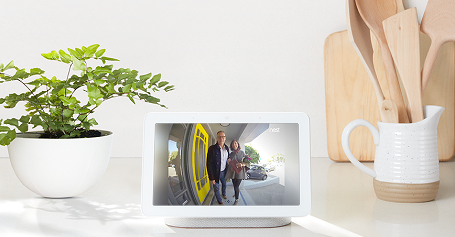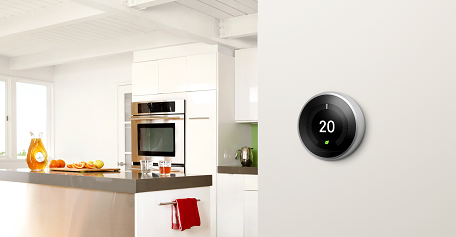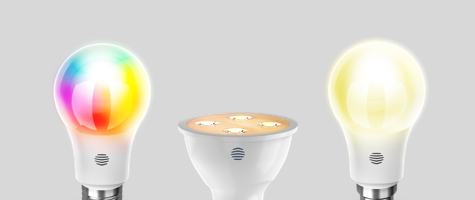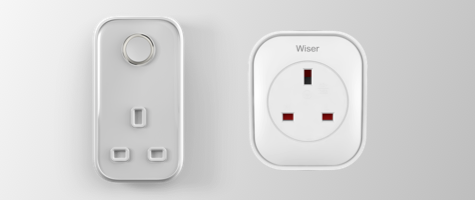The Installers’ Guide to Smart Homes
Worth over $84.5 billion in 2021 and projected to grow to $138.9 billion by 2026, the smart home market is growing at an astounding rate, thanks to the widespread adoption of smart home devices.
Smart home devices allow customers to control their heat, light, plugs, and a plethora of other home features via their smartphone or smart device hub.
This provides a growing opportunity for installers, as smart home installation and repair is becoming increasingly sought-after.
Luckily, setting up a smart home isn’t as daunting as it may initially seem. Once you know how smart tech links together, it’s easy to automate an entire home or office with a few off-the-shelf products.
Whether you’re setting up a few smart devices or installing a whole smart home system, it’s important to know the ins-and-outs of smart technology - including what it does, how to install it, and how it all works together. Let’s take a look at the most common smart devices available, and everything you (and your customers) need to know about them.
Smart hubs are at the heart of any smart home. They are typically placed in the busiest part of the property - often the kitchen or living room in domestic settings.
Smart hubs come in two variations: smart speakers, and smart displays.
Smart speakers rely on voice commands to control smart devices, whereas smart displays utilise voice commands as well as a built-in touchscreen display.
A number of smart hubs are available, and the one you buy will depend on customer preference and compatibility with other smart devices. One of the most popular smart hubs available is the Google Nest Hub, which is fully compatible with most other smart devices on the market, and can synergise effortlessly with your customers’ smartphone.

They can do more than just control other smart devices, however. Once set up, smart hubs can broadcast messages around the house, give you a summary of the latest news, or tell you the weather forecast for the day ahead. The sheer convenience of smart hubs alone has led to huge market growth in recent years.
How to install smart hubs:
Smart hubs do not require specialist knowledge to install or set up. Simply plug them into the mains, connect them to the property WiFi, and follow the instructions for a quick and painless setup.
More than one smart hub can be connected within a smart home. This allows for maximum coverage within any property - as long as both devices are connected to the same WiFi network.

Smart home thermostats allow users to effortlessly control their heating systems and air conditioning systems from their phone or smart hub.
They can automatically adjust the temperature based on the current weather, time of day, and the status of other connected devices. Premium smart thermostats such as the Google Nest Smart Thermostat can automatically detect when users have left the property, so customers aren’t wasting energy heating an empty home.
How to install a Smart Thermostat
Installing a smart thermostat is the most complicated part of setting up a full smart home system. Installation involves working with high voltage wiring, which means customers will usually choose to hire a professional installer rather than risk doing it themselves.
Installing a smart thermostat usually involves turning off the power, connecting the wiring from the old thermostat to the new thermostat, and hanging the new thermostat correctly - as well as linking it to the smart system.
Each smart thermostat brand will follow a slightly different installation process, so it’s important to read the instructions. To give you a better idea of the installation process as a whole, the instructions for one of our best selling smart thermostats - the Google Nest Smart Thermostat E - can be found here.
Smart Lighting
Smart light bulbs are a convenient, energy-saving way to control your home lighting. They allow users to configure the light brightness, colour, and colour temperature of any connected bulb from your smartphone or smart hub.
Smart lighting allows customers to create the perfect lighting setting, as well as save energy. Gone to bed but forgot to switch the kitchen light off? No matter, simply use a smartphone or smart hub to turn it off from anywhere.

How to install smart light bulbs:
Fortunately, smart light bulbs are as easy to install as regular light bulbs. From B22 to E27 to GU10 bulbs and strip lighting, there’s a smart alternative to suit every light fitting.
Once you’ve installed the bulb, you can put it in ‘pairing mode’ by turning the light switch on and off a few times (this depends on the bulb you buy, so always read the instructions). Once in pairing mode, smart bulbs can be discovered by a smart hub or phone app, connecting them to the smart home system.
Smart Home Security
Smart security cameras, smart sensors, and smart doorbells can keep any property (and its contents) safe and secure.
Unlike traditional security systems, smart security products link directly to smartphones and hubs to immediately notify users of unexpected movement or suspicious activity. This also give the user complete control over their home security, even when they’re on away on holiday or out of the country.
Smart doorbells allows customers to see who’s at the door, and even speak to them directly from their smartphone.
The video feeds from these products can be incredibly useful when it comes to home security, as users can playback and record incriminating evidence when a break-in has been attempted. They can also configure their smart lights and speakers to act as an alarm system once unwarranted motion is detected.
Smart smoke and carbon monoxide alarms can also be fitted, which alert the user’s phone once a problem is detected.
How to install smart home security:
Much like smart thermostats, installing smart security devices often equates to more than simply plugging them in.
Smart home specialists are often hired to install indoor and outdoor security cameras and smart alarms, as fitting them requires experience with wiring systems.
Smart doorbells are usually simpler to install, and anyone with a competent drill and a basic knowledge of DIY can install them. Despite this, installers are commonly hired to fit them and set them up.
Smart Plugs
Smart plugs are the most versatile smart product available, allowing customers to control non-smart devices with a smart hub. They’re an effective way to enable smart control on old tech, and can work on anything that has a plug.
Some smart plugs can help customers save money by displaying how much power they use over a given period. Others are water resistant, making them suitable for use in gardens or on balconies.

How to install smart plugs:
Installing a smart plug is as simple as plugging them into the wall, then plugging the device you wish to connect into the smart plug.
You may have to download an app to connect smart plugs to the smart hub.
Smart Radiator Valves and Thermostats
Smart radiator valves and smart radiator thermostats are a convenient way for users to control the temperature of each individual radiator.
Smart radiator kits, such as the Honeywell Evohome Radiator Kit, provide an effective way to keep temperatures optimal and costs down, whilst preventing boiler interlock. They allow users to only heat the rooms they want at the times they want - and much like other smart devices, this can be done remotely from anywhere in the world.
How to install smart radiator valves and thermostats:
Most smart radiator thermostats and valves fit standard TRV bodies, making them quick and easy to install.
Each brand will have a different way of pairing with the smart home system, so ensure you read the instructions for these products.
Why not take a look at our incredible offers on all smart home products during August’s Smart Month.
What’s more, by opening a City Plumbing trade account, you’ll enjoy additional savings - with 20% off all purchases when you open a credit account, or 10% off when you open a cash account.
There’s never been a better time to stock up the van and get stuck in to the world of smart home systems



